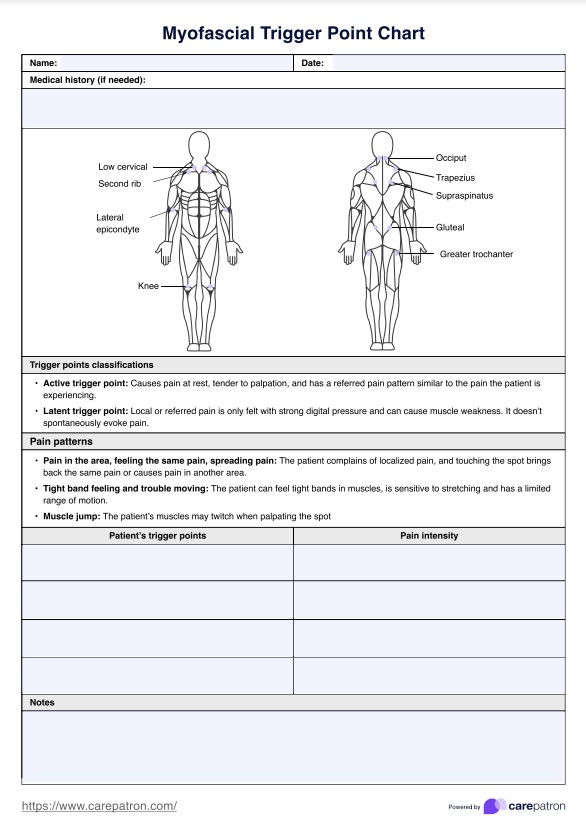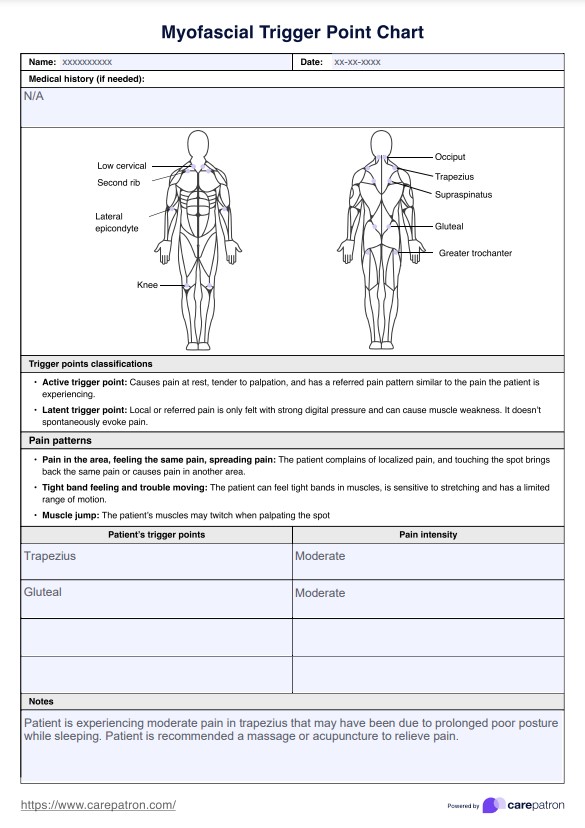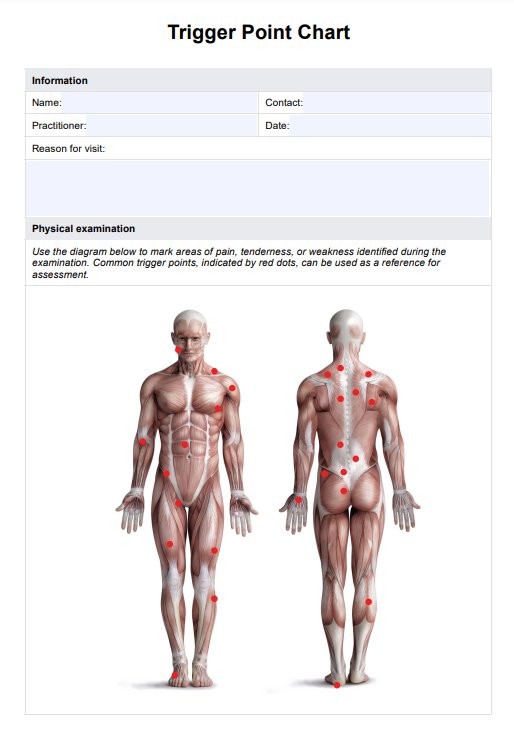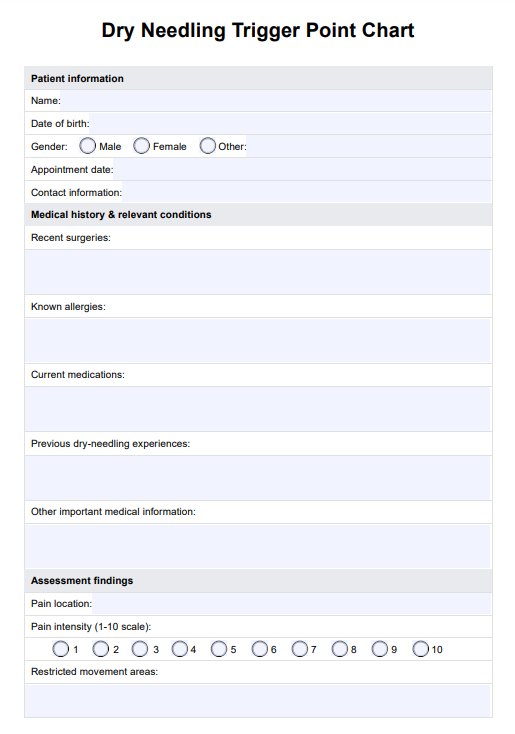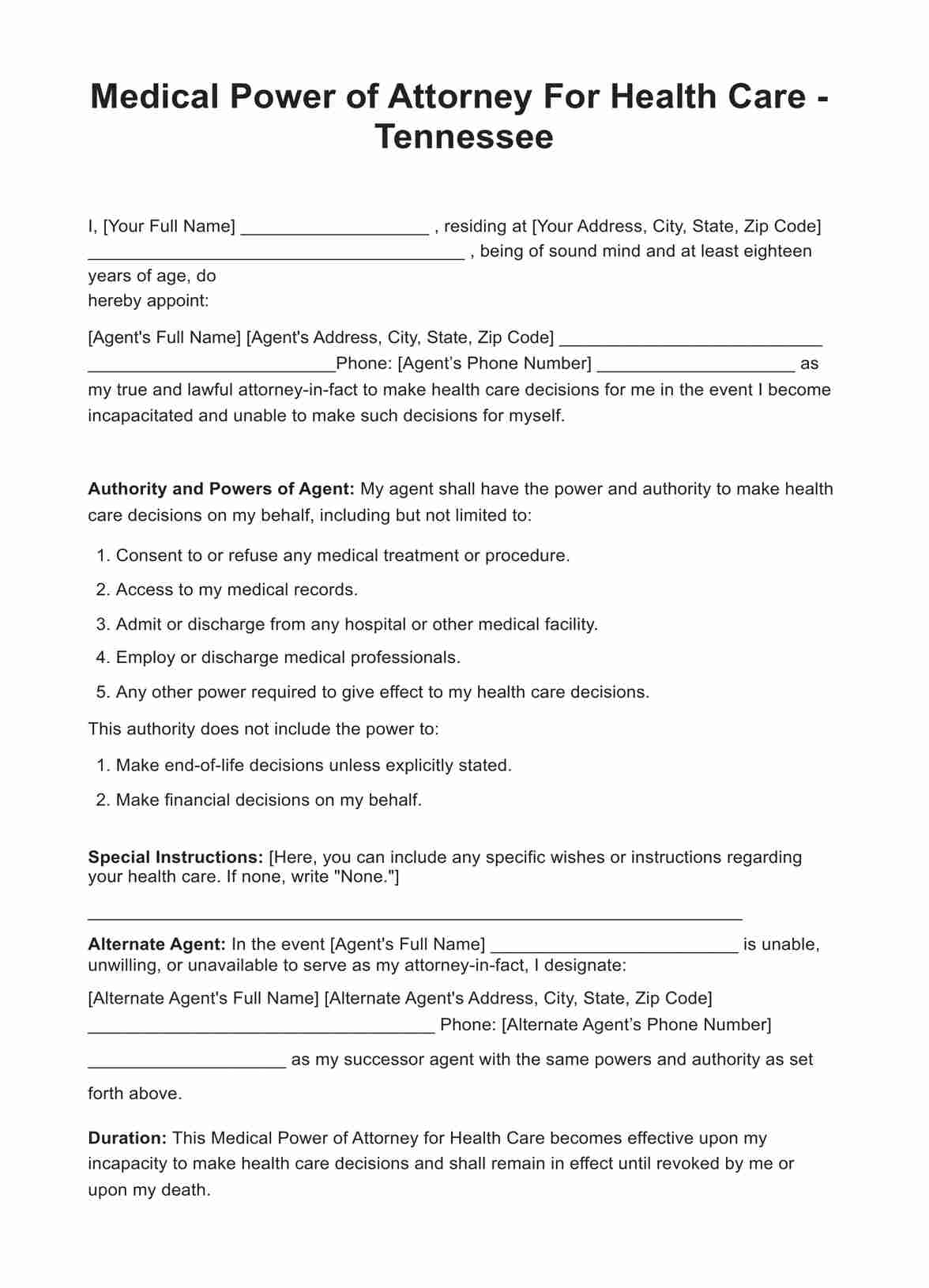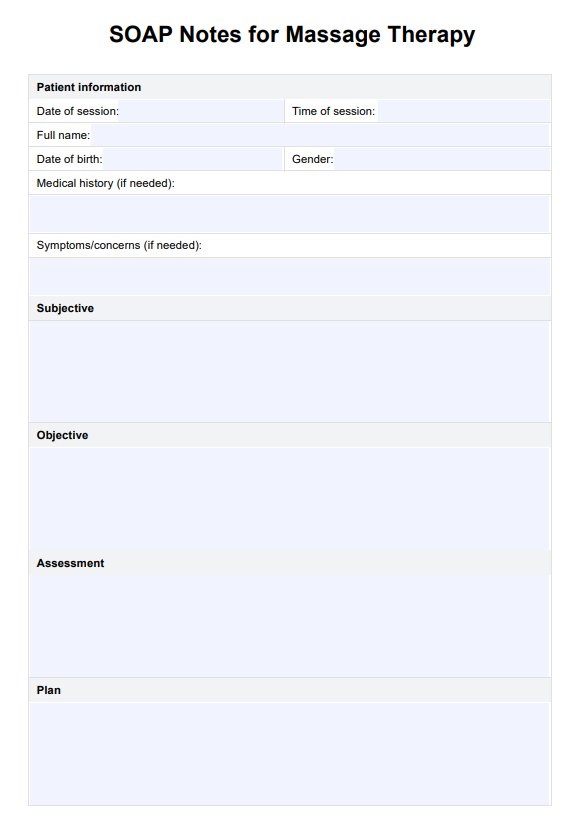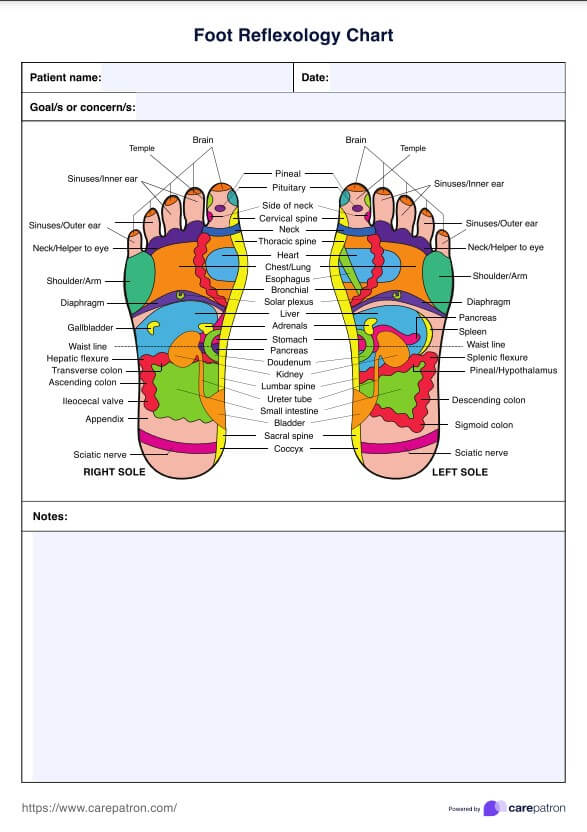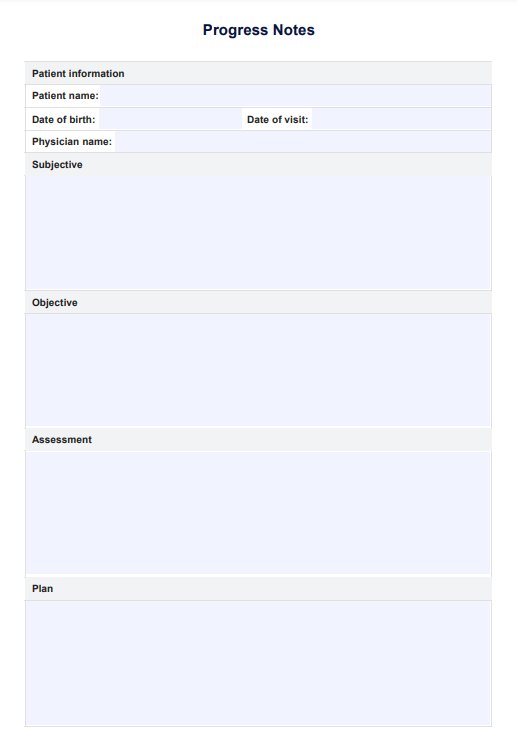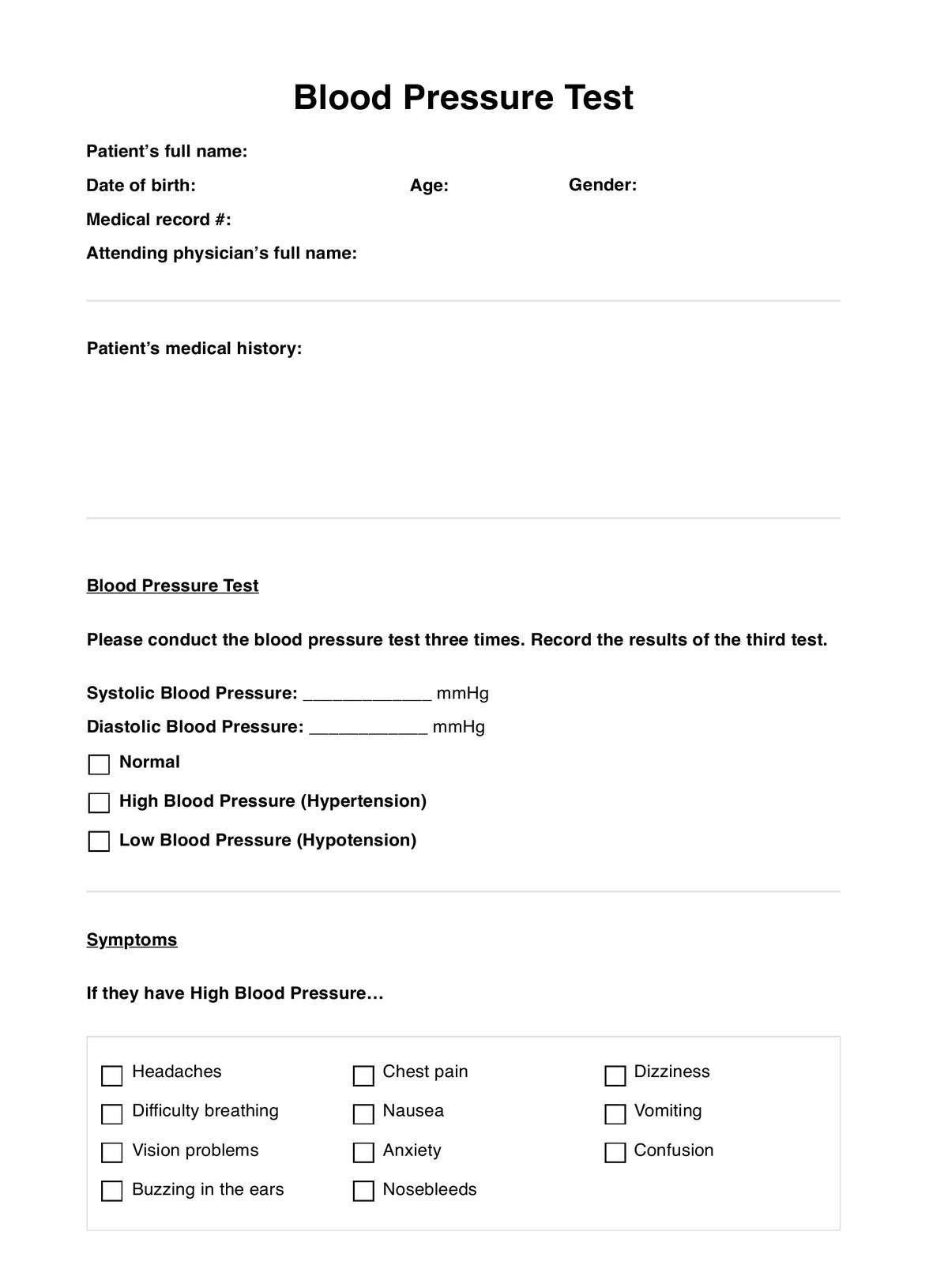Myofascial Trigger Point Chart
Discover the effectiveness of Myofascial Trigger Point Charts for accurate diagnosis and treatment of pain. Enhance patient care with visual precision.


What is a Myofascial Trigger Point Chart?
Myofascial trigger points refer to hypersensitive spots within muscles that can lead to muscle pain, stiffness, and related symptoms. While trigger points can emerge in any muscle, they predominantly occur in the neck, shoulders, back, and legs.
Various methods are employed to release myofascial trigger points, including gentle massage involving sustained pressure, dry needling utilizing thin needles to alleviate muscle tension, targeted stretching to relieve pain and muscle spasm, and enhance flexibility, heat therapy to relax muscles, and ice therapy to mitigate inflammation and pain.
These points are often depicted on a Myofascial Trigger Point Chart, which visualizes their locations throughout the body. These charts also illustrate the concept of referred pain, where discomfort is felt in areas separate from the trigger point. For instance, a trigger point in the neck may cause pain to radiate to the shoulder, arm, or fingers.
These charts are valuable in healthcare, aiding professionals in diagnosing and treating myofascial pain syndrome (MPS), characterized by multiple trigger points. Managing MPS typically involves massage, dry needling, and other therapies to release trigger points.
Myofascial trigger point charts are also useful tools for individuals seeking to understand and address pain caused by trigger points. Those suspecting trigger points as the source of their discomfort are advised to consult a healthcare professional for accurate diagnosis and appropriate treatment.
Myofascial Trigger Point Chart Template
Myofascial Trigger Point Chart Example
How does the Myofascial Trigger Point Chart work?
Myofascial Trigger Point Charts play a crucial role in understanding and managing myofascial pain syndrome, aiding both healthcare professionals and individuals in identifying and addressing trigger points within muscles. These charts are visual maps illustrating hypersensitive trigger points' locations and associated referred pain patterns. Here's how these charts work, along with a step-by-step guide on their usage:
Step 1: Download the printable Myofascial Trigger Point Chart
Start by obtaining the chart, often available online or in medical resources. These printable visuals depict the body's muscles and highlight trigger point locations.
Step 2: Identify trigger points
Using the chart, locate trigger points and note the pain intensity of specific muscles. These are areas known to cause pain, stiffness, and discomfort.
Step 3: Understand types of trigger points and referred pain patterns
Understand the types of trigger points - specifically active trigger points and latent trigger points - and examine the referred pain patterns displayed on the charts. These show where discomfort may be felt even though the trigger point is located elsewhere. This knowledge helps in accurate diagnosis.
Step 4: Compare symptoms
Individuals experiencing pain can cross-reference their symptoms with the trigger point locations and referred pain patterns on the charts. This assists in self-assessment and communicating effectively with healthcare providers.
Benefits
Free Myofascial Trigger Points Charts offer a visual aid for targeted diagnosis and individualized treatment. Here are more of the benefits of using these charts:
Visual precision
Free myofascial trigger point charts provide a clear visual representation of trigger point locations within muscles, aiding practitioners and individuals in accurate identification.
Enhanced diagnosis
By referencing these charts, healthcare professionals can effectively diagnose myofascial pain syndrome and related conditions, leading to more targeted treatment plans.
Informed treatment
Utilizing the charts, practitioners can tailor therapies such as massage, dry needling, trigger point therapy,or stretching, directly addressing trigger points and improving treatment outcomes.
Referred pain understanding
These charts illustrate referred pain patterns, assisting both practitioners and patients in comprehending the complex relationship between trigger points and discomfort.
Patient empowerment
Offering these charts to patients empowers them to participate actively in their care, facilitating self-assessment and enabling meaningful discussions with healthcare providers.
Collaborative care
The trigger points chart encourages collaboration between different practitioners, ensuring a comprehensive approach to pain management and holistic patient well-being.
Commonly asked questions
Healthcare professionals like physical therapists, massage therapists, chiropractors, and doctors commonly use a Myofascial Trigger Point Chart. They aid in diagnosing myofascial pain syndrome, planning treatment, and guiding self-treatment techniques.
The Myofascial Trigger Point Chart is frequently employed when individuals experience pain attributed to trigger points. It diagnoses myofascial pain syndrome, assists in treatment planning, and enables self-treatment techniques like massage and stretching.
Healthcare professionals and individuals locate trigger points and referred pain patterns using a Myofascial Trigger Point Chart, often alongside physical exams and medical histories. Identify the muscle causing pain, locate trigger points on the chart, and apply appropriate techniques for treatment.


